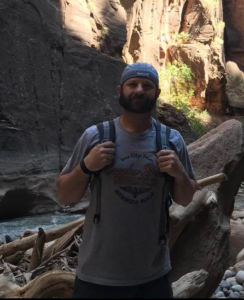María Sabina, a Mazatec curandera from Huautla de Jiménez, Oaxaca, Mexico, is one of the most celebrated figures in the intersection of indigenous spirituality and the global psychedelic movement. Known as the “priestess of mushrooms,” María Sabina devoted her life to healing and spiritual work through the use of psilocybin mushrooms, locally called teonanácatl, meaning “flesh of the gods.” Her remarkable story is both inspiring and complex, illuminating the power of traditional wisdom, the consequences of cultural exchange, and the enduring legacy of indigenous healing practices.
Early Life and Introduction to Mushrooms
María Sabina was born in 1894 into a poor indigenous family in Huautla de Jiménez, a small village in the Sierra Mazateca. Her early life was marked by tragedy; her father died when she was young, leaving her family to fend for themselves in a rural and impoverished environment. Like many children in her community, María worked from an early age, collecting firewood and foraging for food.
Her introduction to psilocybin mushrooms came by chance during her childhood. One day, she and her sister consumed the mushrooms they found in the wild, which induced profound visions and heightened spiritual awareness. This experience laid the foundation for her future role as a curandera, or healer, in her community.
The Veladas: A Sacred Practice
María Sabina’s veladas were deeply spiritual events rooted in Mazatec tradition. The ceremonies typically took place at night, in a sacred and controlled environment, where participants would consume psilocybin mushrooms under María’s guidance. She would chant sacred prayers in her native Mazatec language, a rhythmic and hypnotic performance that helped participants navigate their visions.
The veladas served multiple purposes: healing physical ailments, resolving emotional distress, and seeking answers to life’s pressing questions. María’s role was both as a spiritual guide and a mediator between the human and divine realms. Her deep knowledge of the mushrooms and her ability to facilitate transformative experiences earned her respect and reverence in her community.
Meeting the Western World
María Sabina’s life changed dramatically in 1955 when she met R. Gordon Wasson, an American ethnomycologist who was researching the use of psilocybin mushrooms in indigenous cultures. Wasson, along with his photographer wife Valentina, traveled to Huautla de Jiménez and attended one of María’s veladas.
This experience profoundly impacted Wasson, leading him to publish an article in Life magazine in 1957 titled “Seeking the Magic Mushroom.” The article introduced the Western world to María Sabina and the sacred mushroom tradition, sparking widespread interest in psilocybin mushrooms.
The Burden of Fame
The sudden influx of foreigners disrupted María Sabina’s life and the lives of those in her village. Many locals were wary of the outsiders, whose motives were often misunderstood and whose presence sometimes disrespected local customs. María herself expressed mixed feelings about the attention. While she initially believed that sharing the mushrooms’ power could benefit humanity, she later lamented the loss of their sacredness.
María’s community blamed her for bringing unwanted attention, accusing her of betraying their traditions. She faced social ostracism and even threats, enduring personal and financial hardship as a result. Despite her sacrifices, María remained committed to her work, continuing to perform veladas and honor the mushrooms’ sacred role in her culture.
Cultural Appropriation and Ethical Questions
María Sabina’s story raises important questions about cultural appropriation and the ethics of sharing indigenous knowledge. While her practices introduced the world to the potential of psilocybin mushrooms, they were often taken out of context and commercialized in ways that disrespected their sacred origins.
The psychedelic movement that followed largely ignored the cultural and spiritual significance of the mushrooms in Mazatec tradition, focusing instead on personal exploration and recreational use. This disconnect highlights the challenges of cultural exchange, particularly when sacred practices are commodified or stripped of their deeper meaning.
The Scientific and Therapeutic Renaissance of Psilocybin
In recent years, psilocybin mushrooms have undergone a resurgence in interest, this time within the context of scientific research and mental health treatment. Studies have shown that psilocybin can be effective in treating depression, anxiety, PTSD, and addiction, offering hope to millions of people worldwide.
This renewed focus on psilocybin has also rekindled interest in María Sabina’s work and the indigenous wisdom she represented. However, as the world embraces the therapeutic potential of psilocybin, there is a growing recognition of the need to honor and protect the cultural heritage of its use.
María Sabina’s Enduring Legacy
María Sabina passed away in 1985, leaving behind a complex legacy. To the Mazatec people, she remains a revered yet controversial figure—a healer who shared her sacred knowledge with the world but at great personal and cultural cost. To the global community, she is a symbol of the profound wisdom embedded in indigenous traditions and the potential for ancient practices to inform modern healing.
Lessons from María Sabina’s Life
María Sabina’s story offers valuable lessons for those navigating the intersection of tradition and modernity:
- Respect and Reciprocity: Sharing indigenous knowledge must be done with respect and reciprocity, ensuring that the communities who safeguard these traditions benefit from their dissemination.
- Preservation of Sacred Practices: The commercialization of sacred traditions risks stripping them of their meaning.
- Holistic Healing: María’s work reminds us of the importance of addressing not just physical ailments but also emotional and spiritual dimensions of well-being.
- Acknowledging Indigenous Contributions: The global fascination with psychedelics owes much to indigenous wisdom.
Conclusion
María Sabina’s life is a testament to the power of indigenous knowledge and the resilience of the human spirit. As the world continues to explore the potential of psilocybin mushrooms, her story stands as a beacon of wisdom, humility, and caution. Through her story, we are reminded of the importance of honoring our connection to nature, our respect for tradition, and our collective pursuit of healing and understanding.
The post The Life and Legacy of María Sabina: Mexico’s Sacred Mushroom Healer first appeared on Mycology Now.
The post The Life and Legacy of María Sabina: Mexico’s Sacred Mushroom Healer appeared first on Mycology Now.



